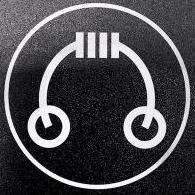Leaderboard
Popular Content
Showing content with the highest reputation on 04/29/2015 in Posts
-
4 points
-
Mjolnir Audio KGSSHV Mini meets your size requirements and kicks ass over any modern Stax amps.2 points
-
2 points
-
Dusty, the correct substitution for cheese is more cheese. I agree that it wouldn't have been as good (but still good) without. Would have been better with moar.2 points
-
2 points
-
There seems to be some consensus on the voltage requirements for electrostatic headphone amps. Nearly all of the commercially available designs put out between 1000 and 1600 volts peak-to-peak, a range of about 4 dB. The legendary Stax SRM-T2 was specified to put out a bit more, close to 1800 volts peak-to-peak, which is 1 dB higher. This would be equivalent to almost all loudspeaker amplifiers putting out between 50 and 125 watts, with the T2 being like a 160 watt amplifier. However, there hasn’t been much discussion on the current demands for electrostatic headphone amps. Output stage currents in commercial amplifiers have run between 2 mA/channel (Koss ES950) and 36 mA/channel (Blue Hawaii). Back in 1978, Nelson Pass published in The Audio Amateur (issue 4, p. 12) some measurements he had done on the slew rate of music signals. He tried out various cartridges and LP records, and using a 100 watt amplifier with a 30 volt/microsecond slew rate, reported that the highest slew rate he found with music signals was 1.5 volts/microsecond up to clipping levels. The late Peter Baxandall also published some years ago in Wireless World that music signals required an amplifier slew rate sufficient to drive a 6 kHz sine wave to clipping with low distortion, which works out to pretty much the same thing. A 100 watt amplifier has a peak-to-peak output of 80 volts. The Blue Hawaii, to take a current state of the art amplifier, has a peak-to-peak voltage at clipping of close to 1600 volts, which is 20 times higher, so the fastest music signal would have a slew rate of 30 volts/microsecond when the Blue Hawaii is driven to clipping. So how much current does an electrostatic headphone amp need to produce a slew rate of 30 volts/microsecond? A typical electrostatic headphone approximates a load of about 100 pf - Stax specifies most of their current models between 94 and 120 pf. The amount of current required for 30 volts/microsecond into 100 pf would be 3 mA. This is the amount of current that the amplifier has to supply to the headphones alone in order to play the fastest music signals up to clipping. Since amplifiers don’t sound their best at the very limits of their capability, for any real amplifier, there should be additional capacity in both slew rate and current over the bare minimum required. John Broskie has suggested on his TubeCAD website that for low distortion the maximum signal current demand on a tube be a fifth of the standing current. This calculation also assumes that the amplifier itself does not consume any signal current. But that is not always true. Take the Egmont, a basic, inexpensive tube electrostatic amp circuit. It uses 66k resistor loads in its output stage. With +/- 260 volt supplies the output stage runs at 7.9 mA current. If we drive the headphones to 1000 volts peak-to-peak using our fastest music signal the headphone consumes 1.9 mA, but the resistor consumes 7.6 mA, using all the current the output stage is theoretically capable of supplying. The reason that an amp with a total current of 7.9 mA can supply both 1.9 mA to the phones and 7.6 mA to the resistor loads is that the current to the headphone is approximately 90 degrees out of phase with the current to the resistors – remember the geometry of a right angled triangle? The headphone and resistor compete for the available current, and since the resistor is lower impedance than the headphone, the resistor hogs most of the current and the headphone is left with the scraps. Furthermore, the amount of signal current soaked up by the resistor depends on the magnitude of the signal, whereas the amount of current going to the headphones depends on the speed of the signal, so the ratio of 1.9 mA to the phones and 7.6 mA to the resistor is even worse almost all of the time. In fact, this is a problem for any electrostatic headphone amp that uses resistor loads in the output stage since the resistor sets both the standing voltage and the standing current. Massively increasing the voltage and current so that no user will ever come close to reaching its limits doesn’t really solve the problem, it just pushes it farther away. And then, a further problem is that devices and components which can withstand that amount of voltage, current and power are expensive, which rather defeats the goal of an inexpensive design. Now, take my revision of the Stax SRX tube design using current loads. The output stage runs at a higher current and voltage: 14 mA current with the power supplies run at +/- 325 volts. More importantly, the cascoded current loads on each plate measure over 160 megohms impedance, thus requiring a mere 4 microamps to drive them to clipping, so 99.9% of the total standing current is available to drive the headphones. The maximum current required to drive the headphones at clipping is about 2.4 mA, less than a fifth of the current available. To further illustrate the value of a good current source, let’s go back to the Egmont. With the output tubes in that design delivering the same peak signal current of 2.4 mA, it would produce about 300 volts peak-to-peak with about 2.3 mA going to drive the resistors and 0.6 mA to the headphones. For the same signal voltage into the headphones, the Egmont output tubes have to produce 4 times as much signal current. Now these are “back of the envelope” calculations. But at least, now we have a reasonable estimate of how much signal current an electrostatic headphone needs to faithfully reproduce the fastest music signals. And, it is clear that replacing resistor loads with current sources is a much more efficient method. Finally, let me make a brief comment about a related matter. It is sometimes said that electrostatic headphones require voltage but no power. This is false. It is true that electrostatic headphones resemble capacitors, and with a capacitor, the drive voltage and current are 90 degrees out of phase so that no power is consumed. However, remember that a capacitor is a simplified model of a stat headphone. In fact, electrostatic headphones have to consume energy, because we can hear the sound they produce! Sound is a form of energy, and by the law of conservation of energy, one of the most fundamental laws of physics, that means the headphones have to consume energy.1 point
-
1 point
-
1 point
-
1 point
-
Dropped the Calfee off for final assembly and setup. Calfee Tetra Pro, Ksyrium SSC wheels, ultegra 6800 group w/ compact crank, vintage sells turbo saddle and Shimano mtb pedals.1 point
-
I'd say I've been pretty consistent in offering a counterpoint to your ongoing spending spree. By rough estimation your watch collection represents a sizable downpayment on a house or you could practically own the GTI outright by now. And listen, I'm not exactly the pristine voice of reason in this debate so you can (and I'm sure do) ignore much of what I have to say.1 point
-
Sure. The equation relating capacitance, charge and voltage is: V = Q/C where V = voltage, Q = charge and C = capacitance Taking the time differential of both sides we get: dV/dt = (1/C)*dQ/dt where dV/dt = voltage change/time = slew rate, dQ/dt = change in charge/time = current = I So: dV/dt = I/C, or C*dV/dt = I For my example, dV/dt = 30 V/microsecond, C = 100 pf, plugging everything in gives I = 3 mA for 1600 volts peak-to-peak. I used to be a physics major in a previous life. ) The reason you got a different answer for slew rate is that you are calculating for a full-power, 20 kHz signal. However, music does not contain full-power signals at 20 kHz. As Nelson Pass and Peter Baxandall found, the music power spectrum rolls off above around 5-6 kHz at a rate of approximately 6 dB/octave. Because of this, for a 100 watt amp that can swing 80 volts peak-to-peak the fastest slew rate with a music signal is 1.5 volts/microsecond up to clipping, whereas a sine wave 20 kHz signal at clipping would slew at 5 volts/microsecond for the same amp. The fact is that music signals are not that fast compared to some test signals. Multiply those results by 20 for a 1600 volt peak-to-peak signal at 20 kHz gets you to 100 volts/microsec, which is what you calculated, or 30 volts/microsecond for music signals, which is what I got. You'll get the same answer as me if you plug in a full-power signal at 6 kHz, which is what Baxandall said was needed to reproduce music. Now, the calculations in the second post assumed a signal of 800 volts peak-to-peak, which is 400 volts peak, whereas your calculation was for 800 volts peak, hence your answer is twice as high as mine. My number also includes the 1.5 mA current into the capacitative load of the headphone, and because that current is 90 degrees out of phase with the current to the resistor, the overall answer 8.1 mA (rounded off) rather than 8 mA for the resistor load alone.1 point








